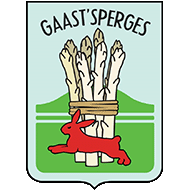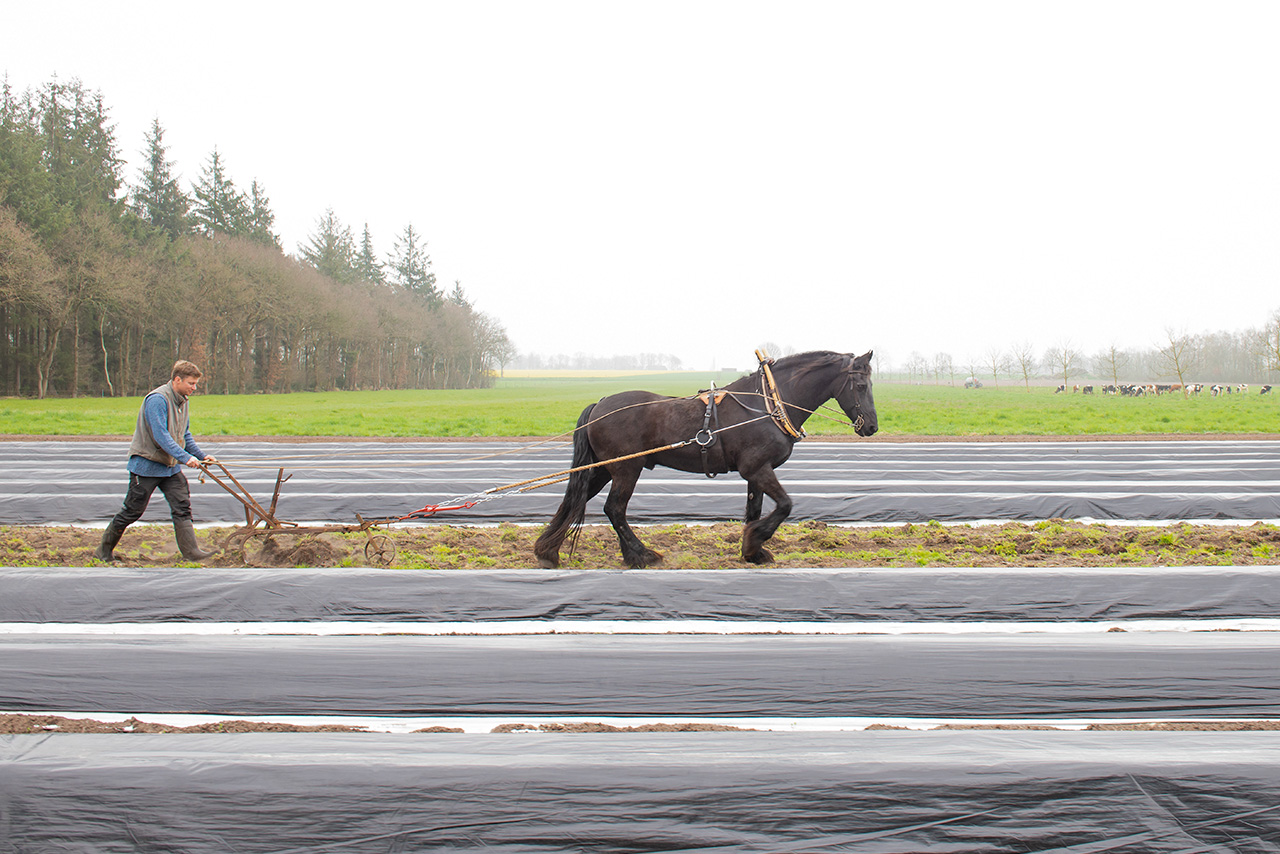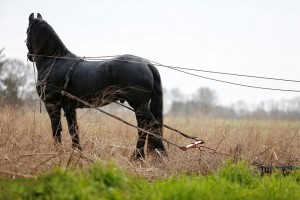
Much of the work in the asparagus is done by hand work. Next, is usually a tractor and then a horse. A horse?
Out of passion and love here at Gaast’sperges, we do the lighter field work with a horse, which in the Netherlands, we call a “four-footer”. A four-footer walks well in between our tall crop rows and mitigates soil compaction. Such light footing is good for the soil vitality and crop growth.
Animal traction, or in our case; horse traction, is a piece of culture which we transfer farming into a piece of sustainable energy. This matches with the resilient entrepreneurship of Gaast’sperges.
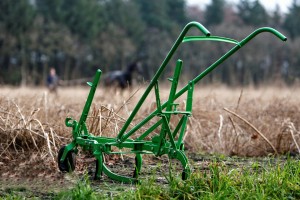
Out of passion, interest and love for working with horses, I have been to several locations in Europe, South America and the United States to see successful examples of horse traction. In the US it was inspiring to work with and watch the Amish. The Amish have kept on farming with horses and as “entrepeneuring” as they are, they have developed horse farming successfully. From their examples, I now use that as experience here at our farm Gaast’sperges.
The star of Gaast’sperges is Teadde (Tay-duh), the four-footed employee of the farm. He is a Frisian horse, a gelding. Proud and happy to take on the field work.
If you could not tell, working with horses is one of my passions. It’s something I didn’t learn back home on the family farm, though I had the opportunity to learn, and experience it, on other parts of the world like mentioned above. This gave me fresh eyes on an old tradition, I now see horse farming as a light, new and animal friendly approach towards agriculture. What lighter implements are there? What are advantages of horse traction and where/what do I want to farm with horses? It was and is, a fun, curious search which led me to beautiful people, horses and places as well as beautiful friendship in various regions.
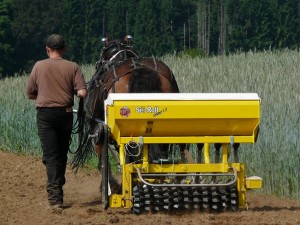
To use the horse successfully in agriculture, I studied the lively subject and tradition passionately. The combination of horse traction and agriculture appeals to me. I have been honored to give several presentations on these subjects, the Amish I befriended, flew me in to the US from Ecuador to give a presentation on the Horse Progress Days, an important “live horse powered” agricultural fair organised by the Amish. There have also been several other presentations in the Netherlands and abroad (Belgium, Germany, United Kingdom, Spain as well as a few more in the US).
Next to the Amish in the USA, there is a growing group of small farmers that picked up working with horses. I came across them while there and stay in touch with them. Stephen Leslie from the state Vermont is such a farmer. Stephen and Gerry (man and wife) have a dairy with a market garden. They do allot of the work with their Fjord horses (see the image next to the text). Stephen is next to farmer a writer. He asked me (among many others) to help along with his book, which I did with both hands.
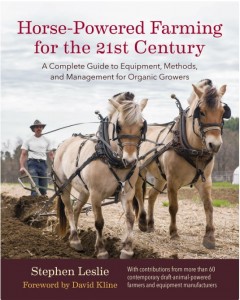 The book shows successful examples from people that farm nowadays with horses in (today’s) agriculture). The book is called: “Horse-Powered Farming for the 21st Centure”. It gives a beautiful sight on the subject of “farming examples” in the USA and Europe.
The book shows successful examples from people that farm nowadays with horses in (today’s) agriculture). The book is called: “Horse-Powered Farming for the 21st Centure”. It gives a beautiful sight on the subject of “farming examples” in the USA and Europe.
Also I’m involved with “Schaff mat Päerd” a non-profit from Luxembourg that develops modern horse traction implements.
Working with horses in agriculture is a joy I like to do. To give a good push or turn on horse traction is something I enjoy doing. My preference goes to hitching the horse “and myself”between our asparagus…
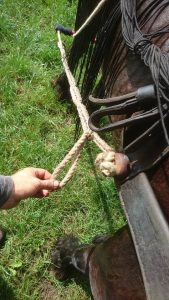 A picture of a “oes-dop”,a wooden button on the side of the horse harness. The loop of the traces connects to the this “oes-dop” button. It serves as a “quickhitch” for hitching an un hitching a horse to an implement. Such buttons are typical Frisian en are dug up from historical sites. They are uncommon nowadays, though we happily keep allive this part of our Frisian identity.
A picture of a “oes-dop”,a wooden button on the side of the horse harness. The loop of the traces connects to the this “oes-dop” button. It serves as a “quickhitch” for hitching an un hitching a horse to an implement. Such buttons are typical Frisian en are dug up from historical sites. They are uncommon nowadays, though we happily keep allive this part of our Frisian identity.
